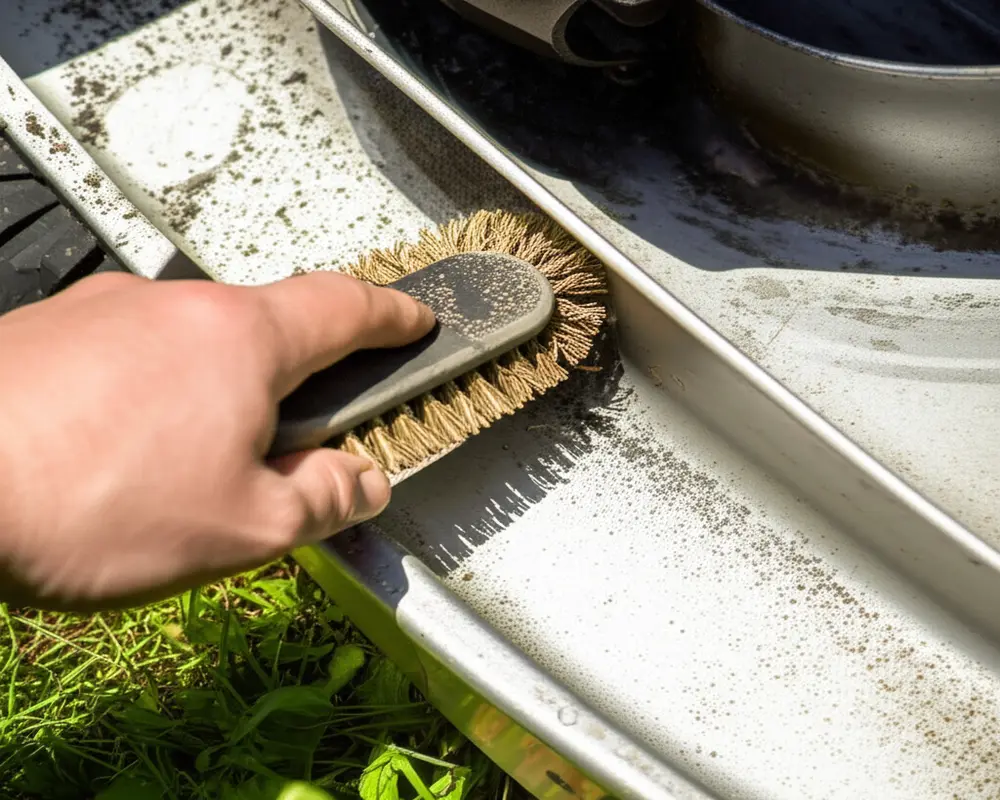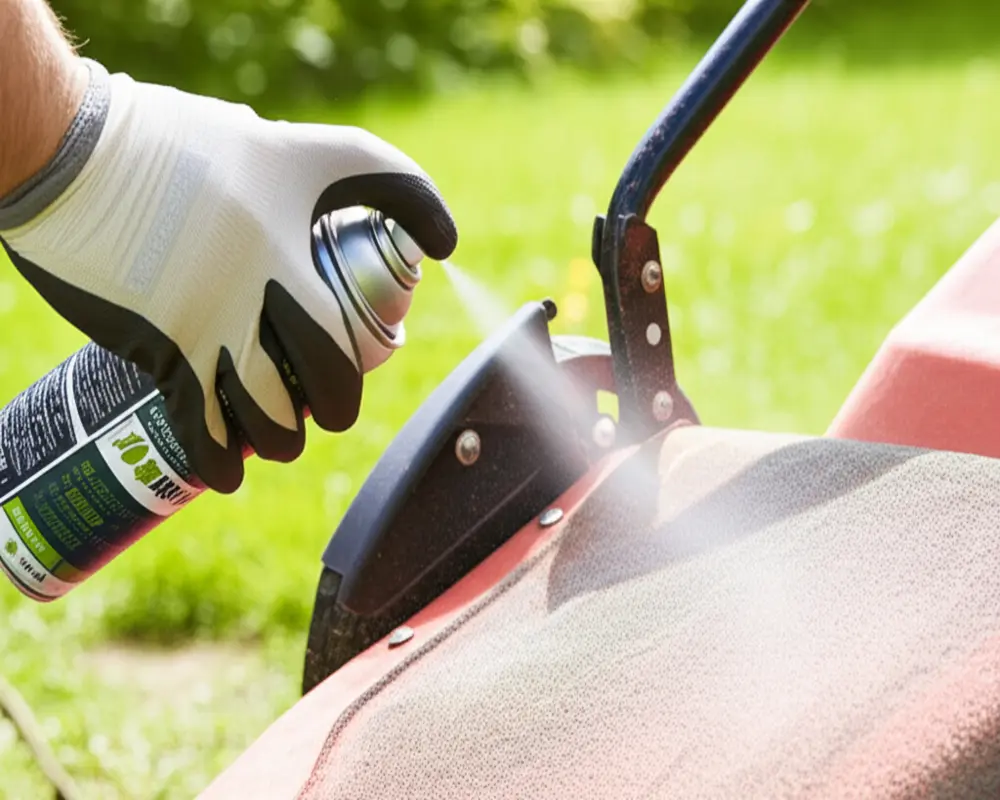Lawn Mower Deck Cleaning: Step-by-Step Guide for 2025
Keeping your lawn mower deck clean is essential for ensuring optimal performance, prolonging the lifespan of your equipment, and maintaining the health and appearance of your lawn. Lawn mower deck cleaning is more than just a chore; it is a critical maintenance task that improves cutting efficiency, fuel economy, prevents rust, and promotes safety during operation. As we step into 2025, understanding the correct cleaning techniques, safety precautions, and maintenance practices will help you get the most out of your mower.
I. Introduction: Importance of Lawn Mower Deck Cleaning
The mower deck is the central component where grass clippings accumulate during mowing. Over time, layers of grass, dirt, and debris build up under the deck, which can clog the blades and reduce cutting efficiency. Regular deck cleaning not only keeps your mower running smoothly but also prevents rust and corrosion that can degrade metal surfaces. A clean deck reduces stress on the engine, helping improve fuel economy and minimizes the risk of accidents caused by blocked discharge areas.
Neglecting deck cleaning can lead to uneven cuts, increased wear on mower parts, and costly repairs. Therefore, integrating deck cleaning into your lawn care routine ensures better mower performance, extends the life of your equipment, and saves money in the long run.
II. Safety Precautions Before Starting
Before you begin the lawn mower deck cleaning process, safety must be your top priority. Handling lawn mowers involves sharp blades and potentially hazardous machinery, so taking the right precautions can prevent injuries.
First, disconnect the power source to avoid accidental engine starts. For gas-powered mowers, remove the spark plug wire to cut electrical flow. Electric mowers should be unplugged or have their batteries removed. Always allow the engine to cool down completely to prevent burns from hot surfaces.
Wear protective gear including gloves to protect your hands from sharp edges, safety glasses to shield your eyes from debris, and sturdy footwear to protect your feet. Position the mower on a flat, stable surface. If you need to tilt or lift the mower for better access to the deck, use ramps or blocks to secure it safely, ensuring it won’t tip over during cleaning.

III. Tools and Materials Needed for Cleaning
Having the right tools and materials on hand will make the deck cleaning process efficient and thorough.
Essential tools include a stiff wire brush to scrub off stubborn grass and dirt, a scraper to remove dried debris, a garden hose for rinsing, a bucket for mixing cleaning solutions, and appropriate cleaning agents such as mild soap or specialized lawn mower deck cleaners.
Optional but helpful tools include a pressure washer for deep cleaning, wire drill attachments to speed up scrubbing, and a shop vacuum to remove loose debris from hard-to-reach areas. For maintenance, keep rust-inhibiting primers, anti-stick sprays, and lubricants ready to protect and treat the deck after cleaning.
IV. Detailed Step-by-Step Deck Cleaning Process
A. Preparation and Workspace Setup
Begin by preparing your workspace. Choose an outdoor area with good drainage or a garage with adequate ventilation. Lay down old newspapers or tarps to catch grass clippings and dirt. Position the mower securely on a flat surface or ramps for safe access to the underside.
B. Removal of Dry Grass Debris with Scraper and Brush
Start by manually removing dry grass clippings and dirt stuck under the deck. Use the scraper to gently pry off hardened debris, followed by the wire brush to scrub remaining patches. Pay special attention to the blade areas and discharge chute where buildup is most common.

C. Wet Cleaning: Soap Solution Application, Soaking, Scrubbing
Mix a mild soap solution in a bucket and apply it generously to the mower deck using a sponge or spray bottle. Allow the solution to soak for a few minutes to loosen dirt and sap. Scrub the deck thoroughly with the wire brush, focusing on areas with stubborn grime.
D. Use of Pressure Washer with Precautions
If you have access to a pressure washer, it can greatly expedite cleaning. However, use moderate pressure and maintain a safe distance to avoid damaging the deck’s paint or seals. Concentrate on flushing out grass clippings and dirt without forcing water into bearings or electrical components.
E. Addressing Rust Spots with Mild Removers
Inspect the deck carefully for signs of rust, especially around edges and joints. Use mild rust removers or a mixture of vinegar and baking soda applied with a wire brush to treat rust spots. Rinse thoroughly once the rust is removed.
F. Rinse and Inspect Deck for Remaining Debris and Damage
Rinse the deck completely with clean water, ensuring no soap or chemical residue remains. Check for any remaining debris and signs of damage such as cracks or loose bolts that may require repair.
G. Drying Thoroughly and Applying Rust Prevention and Anti-Stick Coatings
Dry the deck thoroughly with a clean towel or allow it to air dry in sunlight. Once dry, apply a rust prevention coating or primer to protect the metal from corrosion. For added protection and easier future cleaning, apply an anti-stick coating or spray designed for mower decks.

H. Lubricate Moving Parts
Finally, lubricate moving parts such as blade spindles and wheel bearings with appropriate lubricants to ensure smooth operation. Use products recommended by your mower’s manufacturer for best results.
V. Regular Maintenance and Best Practices
Maintaining a clean mower deck is an ongoing process. Ideally, clean the deck after each use to prevent buildup. If daily cleaning isn’t feasible, aim for biweekly or monthly deep cleaning sessions, especially during active mowing seasons.
Preventive measures include mowing when grass is dry to reduce clumping, applying rust-preventive coatings regularly, sharpening blades to reduce tearing, and avoiding overloading the mower with thick or wet grass. Responsible disposal of grass clippings helps reduce debris accumulation and promotes a healthy lawn environment.
VI. Troubleshooting Common Issues
Sometimes, you may encounter stubborn residue or heavy rust that resists standard cleaning methods. In such cases, consider using specialized rust removers or consulting a professional for deck restoration.
Different deck materials such as aluminum or steel require specific cleaning products and techniques. Always refer to your mower’s manual for material-specific advice.
For hard-to-reach areas, small brushes or compressed air can help dislodge debris. If you notice persistent mechanical issues or structural damage during cleaning, it may be time to consider repairs or replacement of parts.
VII. Conclusion: Long-Term Value of Deck Cleaning
Regular lawn mower deck cleaning delivers tangible benefits including enhanced mower longevity, improved cutting efficiency, and cost savings on repairs and fuel. By integrating deck cleaning into your routine lawn care, you ensure your mower operates safely and effectively year-round.
Proper maintenance is an investment that pays dividends in both mower performance and lawn quality. Stay proactive in your mower care to enjoy a lush, well-maintained lawn with less hassle and expense.
VIII. Frequently Asked Questions (FAQs)
A. Can pressure washers damage mower decks?
Pressure washers can be effective for cleaning mower decks but must be used carefully. Excessive pressure or close-range spraying can damage paint, seals, or electrical parts. Use a moderate setting and keep a safe distance to avoid harm.
B. What is the ideal cleaning frequency for optimal performance?
Cleaning after each use is ideal to prevent buildup. If not practical, aim for thorough cleaning every two to four weeks during mowing season, supplemented by regular inspections.
C. What are the recommended anti-stick sprays?
Anti-stick sprays designed for mower decks reduce grass buildup and ease cleaning. Look for products labeled specifically for lawn equipment, often containing silicone or Teflon-based coatings.
D. What are lubrication tips using WD-40 and alternatives?
WD-40 can be used to loosen rusted parts but is not a long-term lubricant. For moving parts, use dedicated lubricants like lithium grease or mower-specific oils as recommended by manufacturers for lasting protection.
E. How should heavy rust be handled: repair or replace options?
Minor rust can often be treated with removers and protective coatings. Extensive rust compromising structural integrity may require part replacement or professional repair to ensure safety and performance.
F. What are the best disposal methods for grass clippings?
Grass clippings can be composted or used as mulch to benefit your garden. Avoid piling clippings on the mower deck or lawn to prevent mold and debris buildup.
Further Reading and Resources
For more detailed information on lawn mower maintenance, including troubleshooting and tool recommendations, visit Consumer Reports Lawn Mower Maintenance and the University of Illinois Extension on Lawn Mower Care. For practical cleaning tips, Popular Mechanics Deck Cleaning Guide is a trusted resource.
To explore related gardening tools and their maintenance, including pruning shears and garden forks, check out our internal guides such as Best Pruning Shears and Ultimate Guide to Garden Fork Maintenance.

